Bless Our Breath
Care Practice: Recipes for Resilience
Custom
Pie of Trouble. Stays Trouble. Belly on Belly. Let’s Hang. Breathe you infinite. Oxygenenergizer. Animal Creature Plant Breath Soul. The Energy Plan. Amorphous Hypersensibility. Do Ants Breathe? Nova. The Multiple Amorphous Us. Air For Free.
Teo Ala-Ruona TWAH (=These Worlds Are Here)
Common Survival
Anatomy Of Oil
take care,
Liquid Love
Fuck the Patriarchy
Common Survival
Molly Adams, Nicolas Baird, Amanda Baum and Rose Leahy, Haley Bueschlen, Angela Chan / algaela, Sabeen Chaudhry, Allyson Church + Greta Skagerlind, Lucy Cleek, Tiger Dingsun, Charlie Ehrenfried, Andil Gosine, Ryan Hammond, Emily Harter, Quinn Harrelson, Invisible Labor, Emily Jones, David Kim, Les U. Knight, Estrevan Lupino-Smith, Tim Mann, Marius Mason, Lee Pivnik, Plasticity Studio (Grazia Mappa + Gabriele Leo), POSADAS (Pablo Herza + Ignaco Hernandez Murillo), Queer Ecojustice Project (Deseree Fontenot + Vanessa Raditz), Catriona Sandilands, Micah Schippa, Jack Schneider, Pinar Ates, Sinopoulos-Lloyd (Huanca), Michelle T. Site, Rachel Weaver, Corinne Teed, Andrea Tirrell, Antonia Wright, virtuellestheater, Edgar Xochitl, Agustine Zegers, Luis Angel Zepeda
Edition
Audio installation Latrans x Lupus
In Spring 2019, Gas will exhibit the multi-format publication Common Survival curated by the Institute of Queer Ecology (IQECO).
Guided by queer and feminist theory and decolonial thinking, IQECO aims to nurture a new environmental paradigm based on the concepts of interconnectivity and inseparability. Their mission is to create an expanded understanding of Queer Community that includes nonhuman kin and prioritizes anyone subjugated, regardless of race, class, nationality, ability, income level, sexuality, gender or species. Their programming is interdisciplinary and revolves around migratory exhibitions, public programs, and publications (online and IRL).
Common Survival builds upon IQECO’s work imagining and creating alternative, utopian, non-human centered structures for collaboration and artistic research. The publication is the result of an international open call initiated by IQECO and includes contributions from forty artists, collectives, writers and activist groups. The projects appear as texts, zines, screen prints, photographs, sculptural objects, poems, video, audio recordings and other hybridized modes of research display.
Please read the accompanying exhibition statement for Common Survival authored by IQECO below.
The Institute for Queer Ecology was founded, out of necessity, as an act of resistance. It is an institute of hope and relentless optimism towards a utopian ideal, asking only for a place in this world for organisms of every kingdom, gender and sexuality. IQECO, now over one year old, evolved in the tidepool of fear and urgency that followed the 2016 election. In the past year, America has pulled out of the Paris Climate Accord, restricted the rights of transgender inmates, appointed a climate science denier to the helm of the EPA, quietly removed the Presidential Advisory Council on HIV/AIDS, and made countless (relentless) other steps towards the erasure of environmental concerns and LGBTQ+ needs. The question at hand now is simply: How Do We Survive?
That question is loaded. Many of us are growing numb to the bombardment of slow violence that disproportionately affects groups of people that have been experiencing injustice for a history far greater than the last year and half. This resurgence of biopolitical control, overt racism and (capitalistic) environmental destruction in America angers many of us but is also actively destroying peoples lives. Personal survival is not on all of our individual minds, but Common Survival—for our extended communities—needs to be.
The Institute of Queer Ecology believes that our best chance towards Common Survival depends on the formation of an alliance between all subjugated organisms. By better understanding non-human tactics of living and reproducing, we can find alternative modes towards a Common Survival for ourselves and the environment that supports us. This publication is a collection of a variety of survival tactics. Some contributors look towards the future, imagining biotech evolutions that will allow for greater independence from regimes of control, or propose a multispecies transgenic hybridity that will mutually benefit us and other organisms. Some share tactics rooted in the past: Ancestral indigenous knowledge buried beneath settler colonialism. Others present projects rooted in the deepest present; social rituals meant to be acted out in unison by people that encounter this collection of work.
Common Survival manifests itself as multi-format publication, meaning its contents are untethered and diverse in material. It is essentially a traveling exhibition in a box, made to migrate. When we sat down to discuss how we could create an object-based tactile publication without a budget, we immediately realized it was not a model that cooperated well with our intention to present artist research and critical thinking in an accessible, affordable, democratic way. Our solution was to sharply lower the edition size of the publication. There are 6 copies of Common Survival and each is nearly identical. The 6 copies are meant to exist as library books and are available to be loaned to any interested party for one month at a time. We will prioritize community centers over individuals to receive a case upon request, as our mission is to have this work reach multiple people, as fast as possible.
As we are currently running without a budget, we ask that any interested party pay for shipping one way, to receive the work from whoever has it currently. We understand that the shipping cost may be an inhibiting factor towards who can request this work – so if you are interested in receiving it, we recommend partnering with a nearby institution, possibly a gallery, LGBTQ+ youth center, public library or university to cover the cost of shipping and widen the local audience for the work.
The publication exists as an 11 x 17 x 5 inch box, containing 33 projects. The included projects may appear as printed booklets of text, zines, screen prints and photographs, sculptural objects, poems, video or audio recordings on media devices, or other hybridized modes of research display. The 33 selected works are the result of an international open call and the final selection includes people in varying stages of their careers, spanning 7 countries. The accompanying catalog serves as a field guide to those objects. Object descriptions / Artist bios have been provided by the contributors and vary in style as a result of that. Additionally, each case is customized by an artist who has been approached to produce something specifically for this occasion.
The cases that house the publication were designed by:
• Allyson Church & Greta Skagerlind
• David Kim
• Lee Pivnik
• Marius Mason
• Nicholas Baird
• Quinn Harrelson
We would like to extend a thank you to Jack Schneider and Tim Mann of Prairie, a Chicago based exhibition space, for supporting our project from the beginning and providing a space to launch this publication from. Additionally, we’d like to thank Nikki Juen, Lisi Raskin and Christy Gast for their guidance along the way. Lastly, we have to reiterate our appreciation for each contributor, all of whom donated their creative labor to create this project that we all believe in very much.
Designed for the information age – Common Survival also exists as an online archive, but is best experienced offline, in close quarters with friends and strangers alike.
Molly Adams
Molly holds a BA from Pratt Institute and a MA from Stony Brook University in Marine Conservation and Policy. In addition to founding the Feminist Bird Club she is an ornithologist, avid conservationist and the outreach coordinator for the New York Aquarium.
Nicolas Baird
Nicolas Baird is a queer biologist, artist, and dancer who grew up in rural Arizona and still checks his shoes for scorpions every morning. Grounding his practice in photography and new media, he looks for shared patterns across emotional and physical processes. His artwork and scientific research happily focus on death, archives, and narrative reconstruction. Past ecologies include high desert, alpine forest, mediterranean woodland, coastal scrub, and urban jungle. He currently researches taxonomy and paleontology at the Natural History Museum, London, where his daily pleasures include pastries, pasties, dusty fossils, and bubblegum pop.
Amanda Baum and Rose Leahy
Searching through symbiotic networks, ritual recharging, tentacular embraces and queer ecologies Amanda Baum (DK) and Rose Leahy (UK) explore multispecies sympoiesis in a time of global transformations. They began collaborating in 2015 at the Royal College of Art (London) studying MA Information Experience Design. With backgrounds in industrial design and fine art respectively, their work forms a practice combining elements of both. With a multimodal approach spanning interactive installations, immersive experiences, set design and interdisciplinary research, Baum and Leahy explore how environmental action can be married with ceremonial celebration to trigger systems of adaptation.
Haley Bueschlen
Haley Bueschlen (b. 1985) is a research based interdisciplinary artist in New York. Her artist book has been included in the Yale, Harvard, and ICP library collections. She was a resident at Smack Mellon Studio Program, Skowhegan School of Painting and Sculpture, and a Franklin Furnace Grant Recipient. Instagram: @eyes_rolling_forever
Angela Chan / algaela
algaela writes short cli-fi. She is a qpoc based in London with a background in art history and climate change and forefronts multispecies environmental justice. She also runs and curates as Worm, an online curatorial platform for contemporary art and ecology that communicates ecological issues through on- and offline exhibitions, workshops, talks and interviews with practitioners. ( wormworm.org | @worm.art.ecology )
Sabeen Chaudhry
I am a writer/ theorist, creative practitioner and editor of the para-academic online journal ‘Pyura Chilensis’. Whilst my work is usually text-based, it sometimes extends to other media such as collage, video and sculpture. I am currently undertaking a PhD examining love with regards to difference and connection, within the context of contemporary media technologies.
Allyson Church + Greta Skagerlind
Allyson Church (b.1996) is a printmaker, fiber artist and photographer. Her practice is rooted in the exploration of dreams, mental landscapes and interior worlds. In her artist books and quilts, she blends traditional quiltmaking with drawing and different forms of printmaking. She has worked and exhibited across the US and in Italy and Ireland. Her other passions include her vermiculture bin, and urban agriculture—a movement which she regards as highly political.
Greta Skagerlind is a designer, artist, and writer who cares a lot about vernaculars, subculture, queerness, social engagement, DIY, and poetry. They are a founding partner at Merl Studio. Besides art and design, Greta enjoys dogs, sad music, and Chinese food.
Lucy Cleek
I graduated with a BA in Art from Maryville College in 2012. Since then I have maintained an active art practice and continued my education by taking several courses at the Penland School of Crafts. I am currently an artist resident at Studio 212 in Maryville, Tennessee. Nature and animals play a big roll in my work. I’ve been particularly enamored with gastropods and their mating habits. This piece is a pair of leopard slugs mating and hanging over a potentially dangerous set of crystals and carnivorous plants. Land snails and slugs are hermaphroditic and have elaborate love making behavior. They are an example of queerness in nature and, for me, they represent a willingness to continue being authentic in a world that can be threatening.
Tiger Dingsun
Ever notice how most people at the forefront of the environmental movement are white? They would argue that environmental crises are the responsibility of all of humanity, (which, true, but — ) guilt does not fall so nicely and equally as that. The image of our earth that is so often proliferated is the image of the blue marble — pure, pristine, peacefully hanging in pitch black space. What’s missing from this image?
Charlie Ehrenfried
I must know my ancestral past to follow its forward trajectory. But I cannot understand a tradition rooted in places and objects that have been destroyed or stolen. So I’m left with a partial, painful understanding of culture, religion, and family.
Andil Gosine
Andil Gosine (PhD, MPhil, BES) was born in Trinidad and lived there until his family’s move to Canada at the age of 14. He has also since lived and worked in France, Britain and the USA. Associate Professor in Cultural and Artistic Practices at the Faculty of Environmental Studies, York University, Dr. Gosine’s research, writing, and arts practices consider imbrications of ecology, desire and power. His scholarly publications include articles in the journals Small Axe, Topia Journal of Cultural Studies, Alternatives, South Asian Studies, Sexualities, Caribbean Review of Gender Studies, and Canadian Woman Studies, as well as contributions to many anthologies (Queer Ecology, Queerly Canadian, Queer Youth Cultures, Queer Online, etc.) and magazines including Art in America and ARC. Dr. Gosine co-authored Environmental Justice and Racism in Canada: An Introduction.
Ryan Hammond
Artist Ryan Hammond’s current work, “Open Source Gendercodes,” focuses
on the interplay between gender variation and technoscience. By developing novel sex hormone production technologies and dedicating them to the public domain, OSG attempts to queer current regimes of ownership and biopower
Emily Harter
A major tenet of my artistic practice has been the depiction of witchcraft as a means of connecting to queerness. I believe that in this connection, there lies an undeniable relationship the natural world, one that is delineated through ritual and community. In my work, I often aim to represent a queer utopia, one that exists in concordance with nature, where healing occurs through bodily connections between people and the environment. This remains at the core of the piece I have included for Common Survival, “The Birds and The Bees”. Queerness is represented here through bodily relationships grounded in sexuality and ritual. The body is perceived as a permeable membrane, just as much a part of the ecosystem as an inhabitant of it.
Quinn Harrelson
Quinn Harrelson is a curator and writer living and working in Miami, Florida. Founder of Current Projects, an experimental exhibition space in Little Haiti, Harrelson has organized exhibitions at BBQLA, Los Angeles, and curated public programs at the Bass Museum of Art. Current Projects’ exhibitions have been reviewed in the Los Angeles Times, Artforum, AQNB, The Miami Rail, Artfcity, and Hyperallergic. Their work is mostly about the inability of language, or things that are like language, to give us answers sufficient to the questions of the world, and how to be a person in it.
Invisible Labor
Invisible Labor is a trans-disciplinary platform for education, urban ecology and plant communication working across voids and between species binaries to heal all types of bodies (plant, human, animal, unknown).
Emily Jones
Emily Jones is an artist living in London, UK. Can you build a bridge with gumdrops and toothpicks? Why does Penelope Cruz have four gold needles pierced through her ears? How would you organise collective life without representatives? I understand, the ice groans, shrieks, and thunders, life-to-earth magnetism. (decarbonise prosperity) Recent exhibitions include Sand Dollar Sea Biscuit, Prairie Chicago US (2018); Just Us, First Continent, Baltimore (2017); Half Earth, VEDA, Florence (2017); News From Nowhere, Cordova, Vienna, (2016) and Echolocation, Almanac Inn, Turin (2016) emilyjones.info
David Kim
David Kim is an artist, scientist, and educator. In his art practice, he cultivates biological and digital systems as vehicles for personal catharsis and intersectional discourse. A member of IQECO and the international art collective Biome Arts, his work has been featured in Wired, The Boston Globe, The New York Times, and Art in America. Having worked as a biochemical research scientist from 2002-08, he returned to school for the Interdisciplinary Computing in the Arts program at University of California San Diego and then for the Digital Media MFA at the Rhode Island School of Design. He currently works as a program manager at the Rhode Island School of Design and as a biomedical design consultant. He has also been the educational director of an art and architecture NGO, the director of digital stage effects for a contemporary dance company, a high school math and science instructor, and has designed and taught interdisciplinary art+science curricula at various universities.
Les U. Knight
Les U. Knight is a Volunteer in the Voluntary Human Extinction Movement, a loose consortium of concerned people who have arrived at the awareness that the intentional creation of one more of us by any one anywhere can’t be justified. Les has produced These EXIT Times since 1991, first on paper and later as a website, which serves as the vehement voice of The Movement—putting the mental in environmental.
Estrevan Lupino-Smith
I am an artist, researcher, and writer whose work is informed by my curiosity and critical engagements with human interactions in their environments: natural, cultural and constructed. I am are specifically interested in issues of home and belonging, gender, mythologies, conceptions of the wild and movements for justice and self-determination.
Tim Mann
Tim Mann (b. 1990 Woodstock, IL) lives and works in Chicago, IL where he received a BFA from the School of the Art Institute of Chicago. He is co-director at Prairie, an artist-run exhibition space in Chicago.
Marius Mason
Marius Mason is a transgender environmental and animal rights activist and anarchist. In 1999, in the name of the Earth Liberation Front (ELF) he set fire to a lab at the University of Michigan that was conducting research on genetically modified organisms (GMO). After Marius’ husband turned state’s-evidence, Marius was threatened with a life sentence for the arson and other acts of sabotage. With little financial stability and fear of dragging his family into a costly legal battle, Marius pled guilty and was given an extreme sentence of nearly 22 years. No one was ever harmed in any of his actions. Marius came out as transgender in 2013. After a 3 year battle to win the right to medically necessary care, he is, we believe the first trans man to begin medical transition while in Federal custody, setting a precedent for other trans prisoners. Since coming out, Marius has initiated an annual Trans Prisoner Day of Action: an international day of action in solidarity with trans prisoners.
Lee Pivnik
Lee Pivnik (b. 1995) is warm-blooded. He is a visual artist and curator, working predominantly in sculpture, video and social practice, aiming to position himself between economies of power within the current context of global environmental degradation. On good days, he rejects bleak forecasts with a humorous, colorful and queer aesthetic that manifests itself through inventive and organic forms. He was the first long-term artist in residence at Biosphere 2 and additionally is interested in community building through non-commercial and artist run exhibition spaces. In 2017 he founded the Institute of Queer Ecology.
Plasticity Studio (Grazia Mappa + Gabriele Leo)
As a couple, we grew an attraction in each-other when we realized we had two common obsessions: the diversity found in the animal world and the overabundance of iconic signs used by humans in the making of their homes. At the time we started studying home aesthetics, we still had no idea that the two things are strictly bound together with the superfluousness of nature. After all, that’s what eco in ecology stands for: oikos, home. Within the non-human world, Home is not just the place you live in - the shelter, the limit between order and chaos. Homeness is rather an unstable condition that is related to the ways animals interact with the external world. “It has to do with how an object finds itself inevitably on the inside of some other object.” (T. Morton) Homes are purely sensual: stages for performances where animals play the “becoming-other” that seduction entails. This relation enables the production of the frivolous, the unnecessary, that is a common will that equates all the living beings.
POSADAS (Pablo Herza + Ignaco Hernandez Murillo)
POSADAS is a continuous research for alternative views on materials, value and the artistic practice. What defines a wearable piece and how does that affect the human body of the future. These six different charms are meant to bring people hope and the awareness that we can only survive through compassion, effort to understand one another and love to all species.
Queer Ecojustice Project (Deseree Fontenot + Vanessa Raditz)
Deseree Fontenot is a black queer scholar, activist and farmer passionate about weaving together movements for ecological justice and LBGTQ liberation in dynamic and irresistible ways. Vanessa Raditz is a genderqueer & femme-fluid farmer-faerie-researcher-educator dreaming, teaching and healing in alliance with people’s movements for ecojustice and qollective liberation.
Catriona Sandilands
Catriona (Cate) Sandilands is Professor of Environmental Studies at York University. Her work lies at the intersections of queer and feminist theory, environmental philosophy and political theory, and cultural studies. She is the author of The Good-Natured Feminist: Ecofeminism and the Quest for Democracy (Minnesota, 1999) and co-editor of Queer Ecologies: Sex, Nature, Politics, Desire (Indiana University Press, 2010). Her areas of research include: environmental humanities and ecocriticism; environmental public cultures and biopolitics; queer, trans* and feminist ecologies; critical plant studies; biocultural diversity and multispecies cohabitation
Micah Schippa
Disquiet Rainbows is two books as one. The first is a collection of poetry never meant to be read aloud. The second is an atemporal rant with an incoherent aortic muscle that bleeds more honey than blood, and a mouth that glows before fading away. A speculative being inventing a thousand beings; the eternal pupa of a post-queer milieu.
Jack Schneider
Jack Schneider (b. 1991, Minneapolis, MN) is an artist and curator working in Chicago, IL. He holds a Bachelor of Fine Arts from the School of the Art Institute of Chicago. He is a Curatorial Assistant at the Museum of Contemporary Art Chicago and is also the Co-Director of Prairie, an exhibition space focused on critically engaged emerging artists. His own work—which investigates the effects of anthropogenic activity on other species and the environment—has been exhibited recently at Bass & Reiner (San Francisco, CA), 1.5 Rooms (Brooklyn, NY), Adds Donna (Chicago, IL) Born Nude (Chicago, IL) and Lodos (Mexico City, MX). He has participated in numerous residency programs including A-Z West (Joshua Tree, CA), New York Arts Practicum (New York, NY) and European Graduate School’s Summer Institute of Art (Sass Fee, Switzerland).
Pinar Ates, Sinopoulos-Lloyd (Huanca)
Being a nonbinary mixed-indigenous QTBIPOC in the fields of ecology, nature-connection and ancestral skills can be a disorienting experience within the 21st century project of settler colonialism. In resistance, the borders between place and body are remediated as they are borders that serve and uplift white supremacy. Borders between ecological subject and ancestral kin are blurred. Ancestral lineages confluence within my body. The gift of liminality is highlighted thanks to my gendervariant lineage, Quariwarmi, as we hold the space of the in- between as support through Pachacuti. In Andean cosmologies, Pachacuti is a cataclysmic change where the future and “common survival” is uncertain. In the chthulucene, we must continuously decenter ourselves in the myth of human supremacy and rekindle connections to our ancestral and ecological kin who we have been formed by. One of my practices that supports this is trailing and tracking the wild ones. These relationships fruit interspecies accountability that is the foundation of decolonial ancestral-futurism as earth-queers whether we are settlers, native or descendents of the transatlantic slave trade.
Michelle T. Site
I use research, design, writing, and poetry to explore everyday experience and the body. I am most captivated by biology, psychology, and the formation and evolution of personal memory.
Rachel Weaver
Rachel Weaver has a B.A. in Social Sciences and an M.A. in Philosophy, and has been working in farms, gardens, and nature sites in North Texas since 2012. They study environmental philosophy and environmental science, and draw connections between our natural and urban environments, art and nature, living beings and non-living entities. Their environmental education work, zine publications, and performances are parts of a transdisciplinary environmental philosophy approach to evoke the environmental imagination, and maieutic practice. Their self-published zines (weaverzines.tumblr.com) and ambient performances (blendways.bandcamp.com) offer perspectives on the absurd and sublime, dystopias and utopias, feminism and ecologies, soundscapes and field recordings, in order to study axiology (ethics and aesthetics) and evoke maieutic responses.
Corinne Teed
Corinne Teed is a research-based, multimedia artist working in printmaking, installation, time-based media and social practice. Her research interests include queer theory, ecology, critical animal studies and settler colonialism. She has attended residencies at ACRE, Signal Fire and Virginia Center for Creative Arts, while her work has been exhibited in the U.S. and abroad. Teed is currently a Visiting Assistant Professor of Reproducible Media at Oberlin College.
Andrea Tirrell
Andrea J. Tirrell is a 23 year old plant ecologist and photographer who can be found studying and pointing lenses at various plants across the United States, but usually calls New England her home. This particular project was made during her time studying a rare orchid and its fungal counterparts in the rainforests of Puerto Rico in 2016. Since learning of the complex and obligate relationships this orchid has with a variety of different fungi, she better understands the complexity found in all natural relationships between all species, including her own.
Antonia Wright
Antonia Wright is a Cuban-American artist born in Miami, Florida. Wright received her MFA in Poetry from The New School in New York City in 2005 as well as at the International Center of Photography for photo and video in 2008. She has exhibited in the U.S. and abroad and has participated in artist’s residencies both nationally and internationally. Wright has had solo shows at Spinello Projects, Locust Projects, MoCA:NoMi, Vizcaya Museum and Gardens, (Miami, FL), Luis de Jesus Gallery (Los Angeles, CA), and Pioneer Works (New York). Her works were included in group exhibitions at The Hirshhorn Museum and Sculpture Garden (Washington, D.C.), The Perez Art Museum (Miami), The Faena Arts Center (Buenos Aires, Argentina), The Margulies Collection at the Warehouse, Aeroplastics (Brussels, Belgium), The National Gallery of Art (Nassau, Bahamas), and Ping Pong (Basel, Switzerland). In April 2012, she became and founded the first artist-in-residence at the Lotus House Shelter for women and children in Overtown, Miami. She is represented by Spinello Projects in Miami, FL and affiliated with Luis De Jesus Gallery Los Angeles.
virtuellestheater
virtuellestheater was founded in 2015 by seven artists living and working in Hamburg and Berlin. virtuellestheater is not a group name, but the designation of a certain approach to (performative) art. virtuellestheater creates spaces for subversive criticism of the present and for cultural agility, opposing neoliberal imperatives of world building. Using non-linear narrative forms, digital media and new technology it produces speculative performance installations, striving for a good life and a better future. The Ultimate Octopus Sapiens Kit for Earthly Survival is the work of virtuellestheater artists Alina Weber, Fee Römer, Janne Nora Kummer and Sven Björn Popp.
Edgar Xochitl
As queer individuals we are often looking to find our niche in the environment that reflects both our social, cultural and spiritual identities. Many of us spend our developmental years trying to mask our identities within heteronormative ecological norms. Often we subdue ourselves to survive within the burden of colonialism that consumes our soul and suppresses the ecological knowledge our ancestors have built over time, especially for Queer and Trans People of Color. We are Queer Farmers, healers and artists, using our bodies to facilitate the magic of photosynthesis. We have a physical, cultural, and spiritual role in adapting to climate chaos.
Agustine Zegers
Agustine Zegers (b. 1994) is a Chilean bacterial community, writer and visual artist. Their work focuses on queering toxic flows and finding care within our rapidly shifting ecology. They are currently pursuing an MFA from Virginia Commonwealth University.
Luis Angel Zepeda
Luis Angel Zepeda is a California based artist, whose practice revolves around performance and domestic arts such as sewing, cooking, and ceramics. As a first generation Mexican/Nicaraguan-American, their practice is influenced by our current political climate of white supremacy and heteropatriarchy – exploring and dismantling the relationship between the oppressors and oppressed. “Rapture Dat Ass”, 2017 is a video of queer deities from an altered world. It depicts their transformation to higher beings through their sexual liberation - ready to rapture and be raptured.
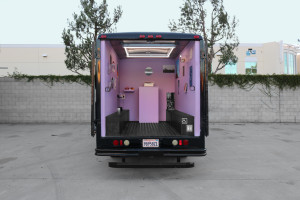
Photographed by Andy Bennett and Colleen Hargaden

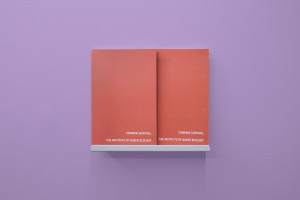
Photographed by Andy Bennett and Colleen Hargaden


Photographed by Andy Bennett and Colleen Hargaden

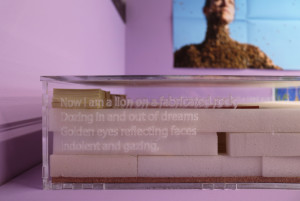
Photographed by Andy Bennett and Colleen Hargaden

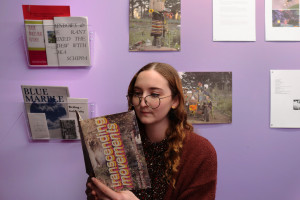
Photographed by Andy Bennett and Colleen Hargaden

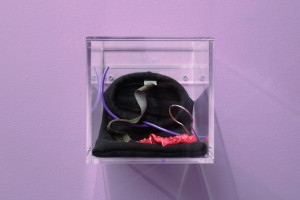
Photographed by Andy Bennett and Colleen Hargaden , 2018

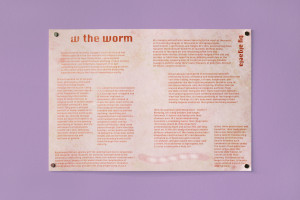
Photographed by Andy Bennett and Colleen Hargaden

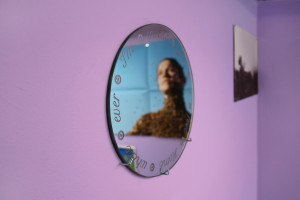
Photographed by Andy Bennett and Colleen Hargaden

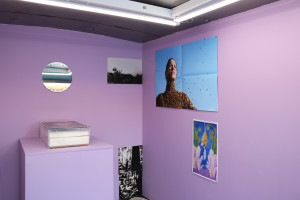
Photographed by Andy Bennett and Colleen Hargaden , 2019

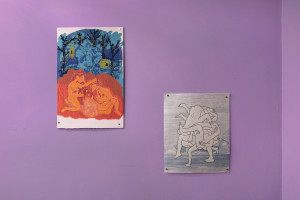
Photographed by Andy Bennett and Colleen Hargaden

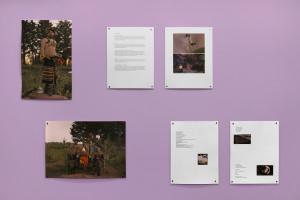
Photographed by Andy Bennett and Colleen Hargaden , 2019

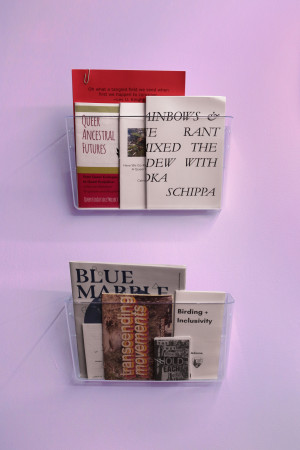
Photographed by Andy Bennett and Colleen Hargaden , 2019

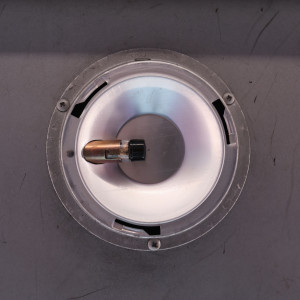
Photographed by Andy Bennett and Colleen Hargaden , 2017

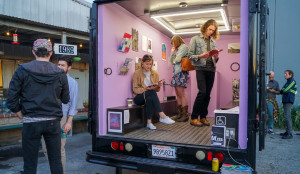
Photographed by Larin Sullivan , 2019

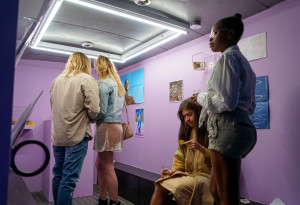
Photographed by Larin Sullivan , 2019

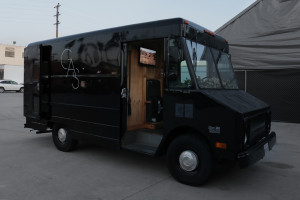
Photographed by Andy Bennett and Colleen Hargaden , 2019

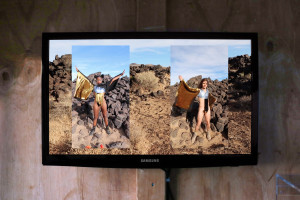
Photographed by Andy Bennett and Colleen Hargaden , 2017

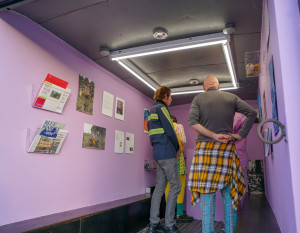
Photographed by Larin Sullivan,

Photographed by Larin Sullivan,

Photographed by Larin Sullivan,

Photographed by Larin Sullivan,
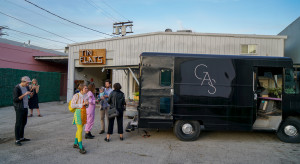
Photographed by Larin Sullivan,

Photographed by Larin Sullivan,
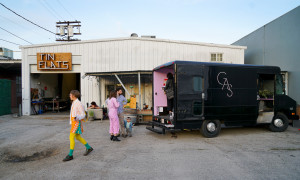
Photographed by Larin Sullivan,

Photographed by Larin Sullivan,
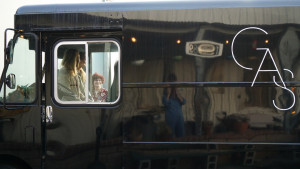
Photographed by Larin Sullivan,

Photographed by Larin Sullivan,
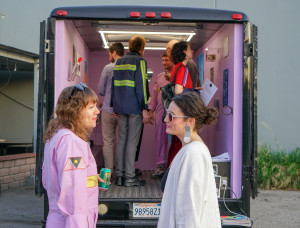
Photographed by Larin Sullivan,

Photographed by Larin Sullivan,

Photographed by Larin Sullivan,

Photographed by Larin Sullivan,
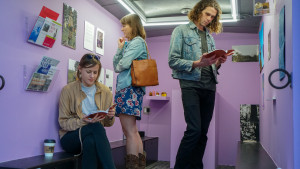
Photographed by Larin Sullivan,

Photographed by Larin Sullivan,
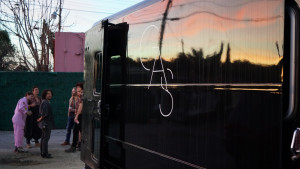
Photographed by Larin Sullivan,

Photographed by Larin Sullivan,

Photographed by Larin Sullivan,

Photographed by Larin Sullivan,

Photographed by Larin Sullivan,

Photographed by Larin Sullivan,
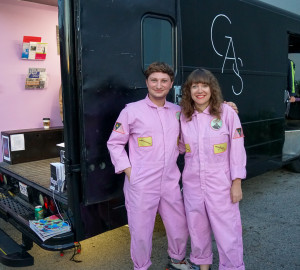
Photographed by Larin Sullivan,

Photographed by Larin Sullivan,
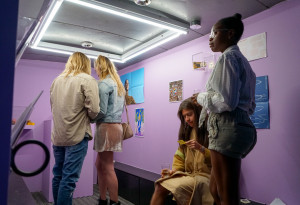
Photographed by Larin Sullivan,

Photographed by Larin Sullivan,
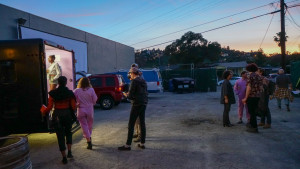
Photographed by Larin Sullivan,

Photographed by Larin Sullivan,
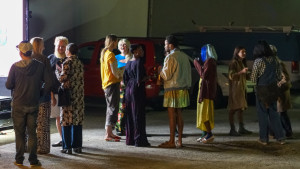
Photographed by Larin Sullivan,

Photographed by Larin Sullivan,
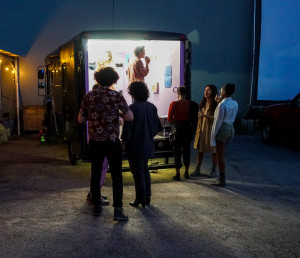
Photographed by Larin Sullivan,

Photographed by Larin Sullivan,

Photographed by Andy Bennett and Colleen Hargaden,

Photographed by Andy Bennett and Colleen Hargaden,

Photographed by Andy Bennett and Colleen Hargaden,

Photographed by Andy Bennett and Colleen Hargaden,

Photographed by Andy Bennett and Colleen Hargaden, 2019

Photographed by Andy Bennett and Colleen Hargaden, 2019

Photographed by Larin Sullivan, 2019

Photographed by Larin Sullivan, 2019

Photographed by Andy Bennett and Colleen Hargaden, 2019

Photographed by Andy Bennett and Colleen Hargaden, 2019

Photographed by Andy Bennett and Colleen Hargaden, 2019

Photographed by Andy Bennett and Colleen Hargaden, 2019

Photographed by Andy Bennett and Colleen Hargaden,

Photographed by Andy Bennett and Colleen Hargaden,

Photographed by Larin Sullivan, 2019

Photographed by Larin Sullivan, 2019

Photographed by Andy Bennett and Colleen Hargaden, 2019

Photographed by Andy Bennett and Colleen Hargaden, 2019